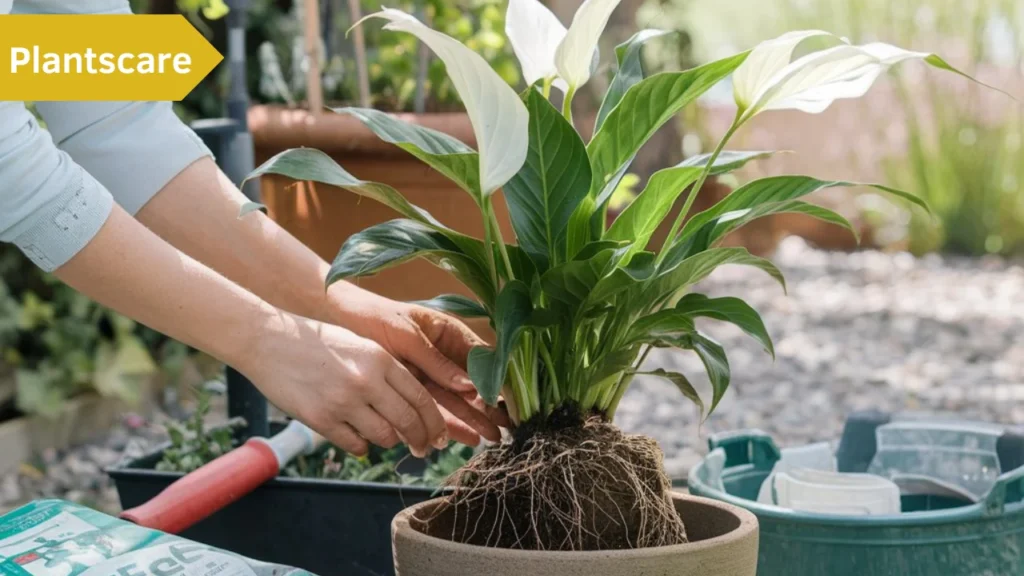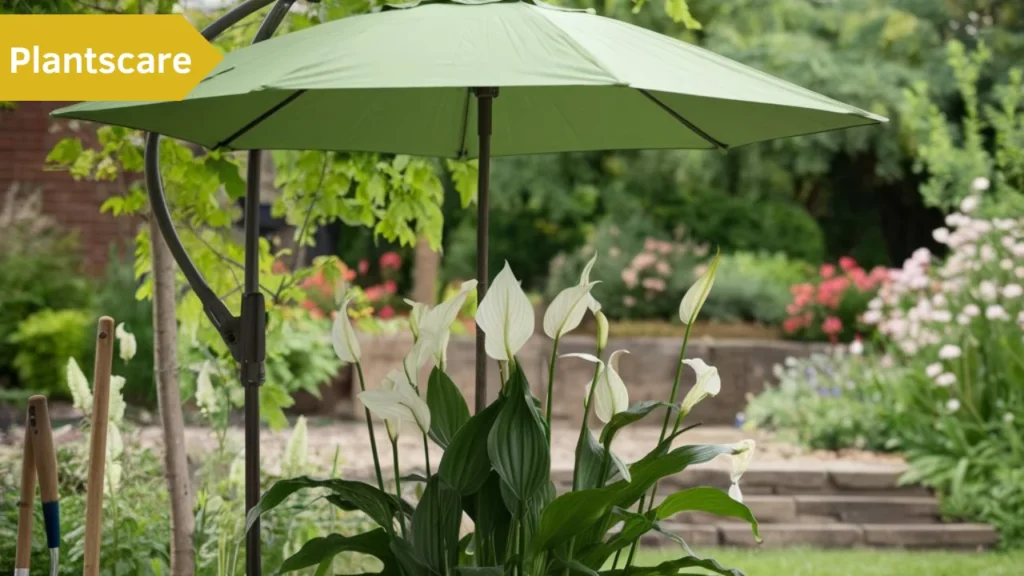Peace Lilies, known for their striking white blooms and glossy green leaves, are often cherished as indoor plants. But did you know they can thrive outside too? While most people grow them indoors, placing your Peace Lily outside in the right conditions can result in a healthier, more vibrant plant. But how do you ensure proper care for this tropical beauty when it’s exposed to the elements? Let’s walk through everything you need to know about outdoor Peace Lily care. In this article, we cover this title “Peace lily plant care outside”
Benefits of growing peace lily outdoors
One of the primary reasons to consider growing your Peace Lily outside is the access to natural sunlight, which helps the plant grow faster and stronger. Additionally, Peace Lilies help improve air quality by removing toxins, and having them outdoors further enhances their ability to purify the surrounding environment.
Choosing the right location for your peace lily
Light requirements
Peace Lilies love bright, indirect light. Too much direct sunlight can scorch their leaves, while too little light may stunt their growth. The perfect spot outside would be a shaded area where the plant can still receive some filtered light, such as under a tree or on a covered patio.
Best locations in Your garden
If you’re planting your Peace Lily in the ground, consider a location that receives dappled sunlight. Areas near larger plants or bushes that provide natural shade are ideal for your Peace Lily.
Ideal Climate for Peace Lilies Outside
Temperature preferences
Peace Lilies thrive in temperatures between 65°F and 85°F (18°C – 29°C). While they can handle warmer temperatures, you should avoid exposing them to cold drafts or frost. Anything below 45°F (7°C) can damage the plant.
Humidity considerations
Since Peace Lilies are native to tropical regions, they thrive in high humidity. Outdoor humidity levels should ideally be around 60% or more. If you live in a dry climate, you may need to mist your Peace Lily regularly or place it near a water source to maintain humidity.
Soil requirements for outdoor peace lilies
Importance of well-draining soil
Peace Lilies prefer well-draining soil that retains moisture but doesn’t become waterlogged. Ensure your garden soil is light and airy, which prevents root rot while allowing the plant to absorb nutrients effectively.
Soil amendments for best results
If your garden soil is heavy or clay-like, you may need to amend it with organic matter such as compost or perlite. This helps improve drainage and adds essential nutrients to the soil, ensuring a healthier Peace Lily.
Watering peace lilies outside
How often to water
Watering your outdoor Peace Lily depends on the climate and the time of year. In warmer months, water it once or twice a week, ensuring the soil remains consistently moist but not soggy. During cooler months, reduce watering frequency.
Signs of overwatering and underwatering
Overwatering can lead to yellowing leaves, while underwatering results in droopy or crispy leaves. Always check the top inch of soil—if it’s dry, it’s time to water. But take care not to go overboard.
Fertilizing your peace lily outdoors
Best fertilizers for outdoor peace lilies
A balanced, water-soluble fertilizer works best for Peace Lilies. Choose one with equal parts nitrogen, phosphorus, and potassium (10-10-10 ratio). Organic fertilizers like compost tea are also a great option.
How often should you fertilize?
You can fertilize your Peace Lily every 6-8 weeks during the growing season (spring and summer). Avoid fertilizing during winter, as the plant enters a dormancy phase and requires fewer nutrients.

Dealing with pests and diseases
Common pests affecting peace lilies
Aphids, spider mites, and mealybugs are common pests that can affect your Peace Lily outdoors. Check the undersides of the leaves frequently for indications of infestation.
Natural pest control solutions
To avoid using harsh chemicals, you can use neem oil, insecticidal soap, or a homemade mixture of water and dish soap to manage pests. Consistent monitoring and cleaning of the leaves will also help keep pests at bay.
Pruning and maintenance
Why pruning is necessary
Pruning aids in keeping your Peace Lily healthy and in shape. It encourages new growth and keeps the plant looking neat and tidy.
How to properly prune peace lilies
To prune, remove dead or yellowing leaves at the base. Trim any old flower stalks that have turned brown. Always use clean, sharp shears to avoid spreading disease.
Protecting peace lilies from extreme weather
How to shield from direct sunlight
If your Peace Lily is exposed to too much direct sunlight, you can protect it by using a garden umbrella or shade cloth. This will filter the sunlight and prevent leaf burn.
Winter care tips
In colder months, it’s important to either bring your Peace Lily indoors or cover it with a protective layer such as frost cloth if temperatures drop below 45°F (7°C).
Repotting outdoor peace lilies
When to repot
Outdoor Peace Lilies should be repotted every 1-2 years, especially if they’ve outgrown their container or are showing signs of root-bound growth.
Steps for repotting
- Carefully take the plant out of its garden bed or container.
- Loosen the roots and shake off excess soil.
- Place it in a larger pot or a new location with fresh soil.
- Give the plant plenty of water to aid in its settling in.
Common mistakes to avoid in outdoor care
Overwatering issues
Overwatering is a common mistake in Peace Lily care. Always ensure proper drainage to prevent root rot, which can easily occur if the soil remains soggy.
Placing in too much sunlight
Avoid placing your Peace Lily in direct sunlight for extended periods, as this will cause leaf burn. Filtered or indirect light is best.
Benefits of bringing peace lilies inside during harsh seasons
Why peace lilies thrive indoors in colder months
Peace Lilies are sensitive to cold and do much better indoors during the winter. Bringing them inside ensures they stay within their preferred temperature range, and they continue to grow with minimal light needs.
How to transition them back outside
When spring arrives, gradually reintroduce your Peace Lily to the outdoors by placing it in a shaded area for a few hours each day. This prevents shock from sudden environmental changes.

Peace lily toxicity and outdoor pet safety
Why peace lilies are toxic to pets
The crystals of calcium oxalate found in peace lilies are poisonous to dogs and cats if consumed. This can cause vomiting, drooling, and swelling of the mouth.
How to keep pets safe around peace lilies
To keep your pets safe, place the Peace Lily in an area that is out of their reach or consider using barriers to prevent access.
Conclusion
Caring for Peace Lilies outside can be rewarding as they respond well to the natural environment. With the right care, they will thrive in your garden, providing lush greenery and beautiful blooms. Just be mindful of their specific needs like light, temperature, and water, and you’ll have a flourishing Peace Lily that can be the star of your outdoor space.
FAQs
Can peace lilies survive outside in the winter?
Peace Lilies are sensitive to cold and should be brought indoors when temperatures drop below 45°F (7°C).
How much sunlight does an outdoor peace lily need?
Peace Lilies need bright, indirect sunlight. Too much direct sunlight can damage their leaves.
Do peace lilies attract pests outside?
Yes, they can attract common pests like aphids, spider mites, and mealybugs.
What type of soil is best for outdoor peace lilies?
Peace Lilies prefer well-draining soil that retains moisture but isn’t waterlogged.
Can peace lilies be planted in the ground outside?
Yes, they can, provided the soil is suitable and they’re planted in a shaded location.